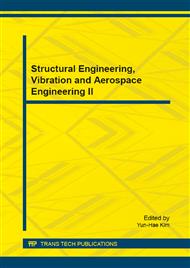p.323
p.327
p.334
p.343
p.347
p.353
p.358
p.362
p.368
Risk Assessment of the Debris Flow Gully in Tibet Southeast
Abstract:
Risk assessment of debris flow is the core content and decision-making basis for debris flow disaster forecasting and the disaster prevention work. It is a comprehensive analysis for the geological, climate, rainfall, historical disaster activities and human engineering activities in some certain areas which may be in danger conditions, so as to determine the occurrence probability of debris flow. In this study, risk assessment model of the debris flow gully in Tibet southeast area is established. According to the correlation ratio of risk assessment indexes and the debris flow occurrence, the assessment indexes can be divided into three levels and defined with some certain values according to the correlation of debris flow occurrence. Finally, the risk assessment of debris flow gully in Tibet southeast area is conducted, and model outputs achieve a good result.
Info:
Periodical:
Pages:
347-352
Citation:
Online since:
January 2015
Authors:
Keywords:
Price:
Сopyright:
© 2015 Trans Tech Publications Ltd. All Rights Reserved
Share:
Citation:


